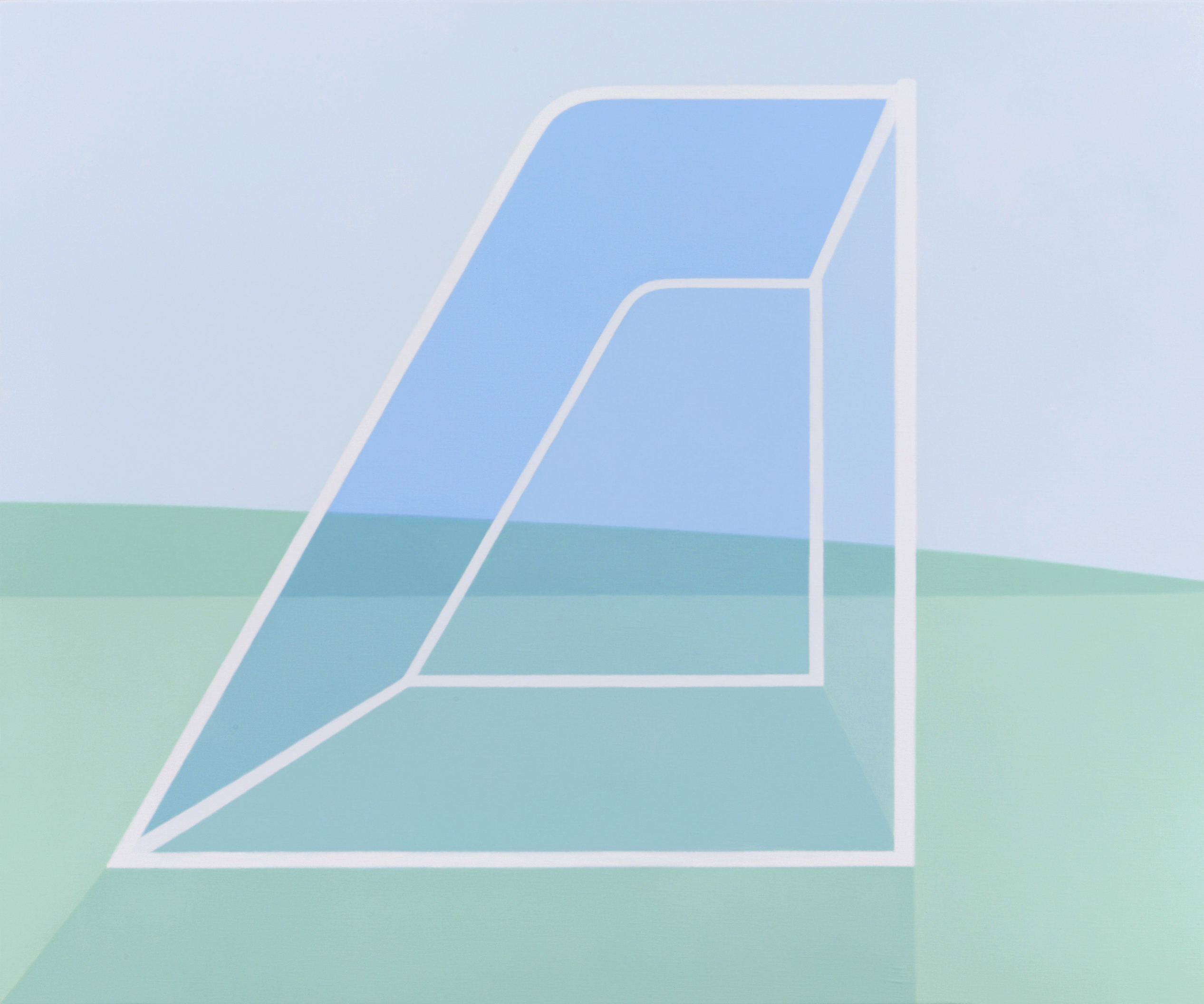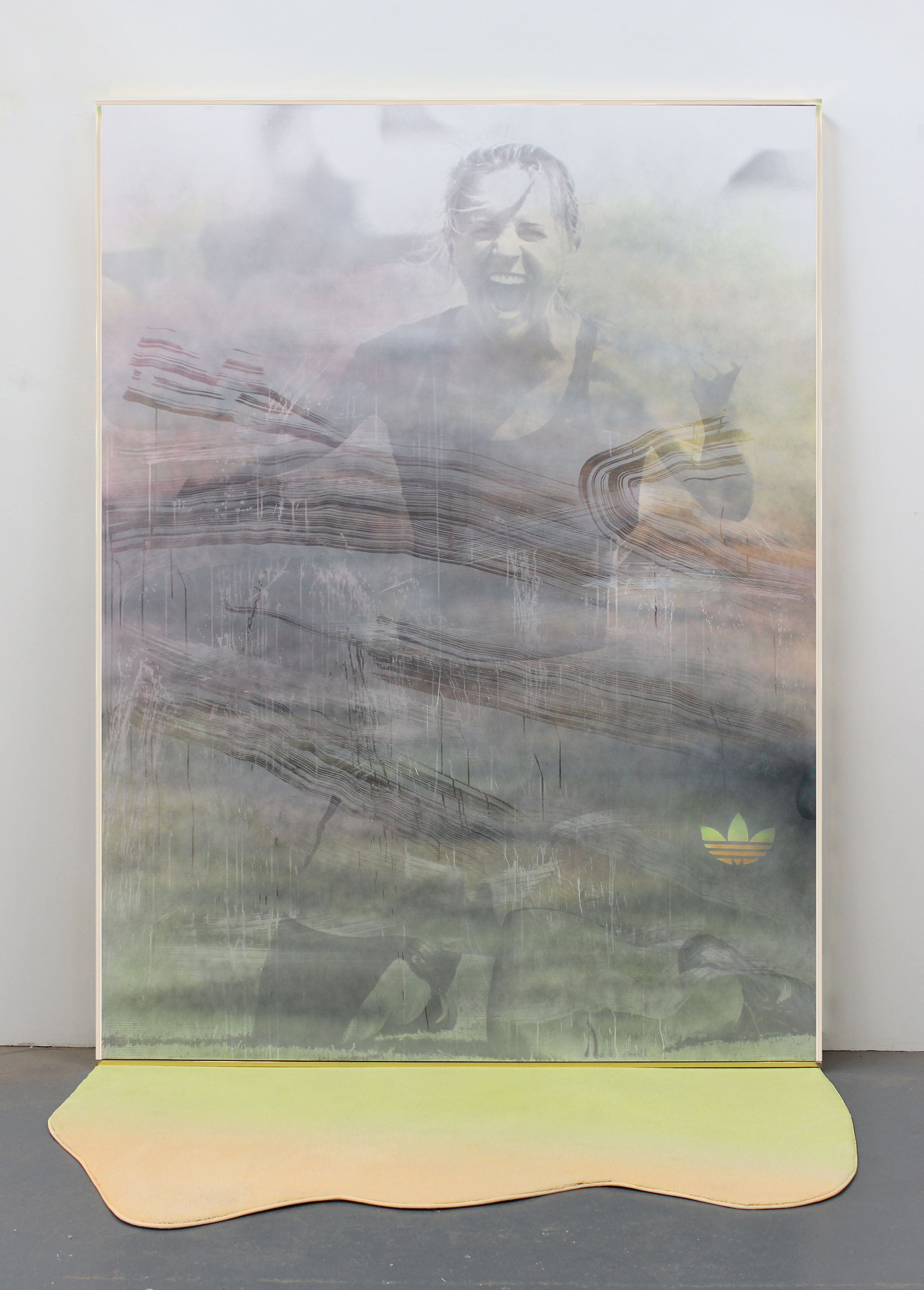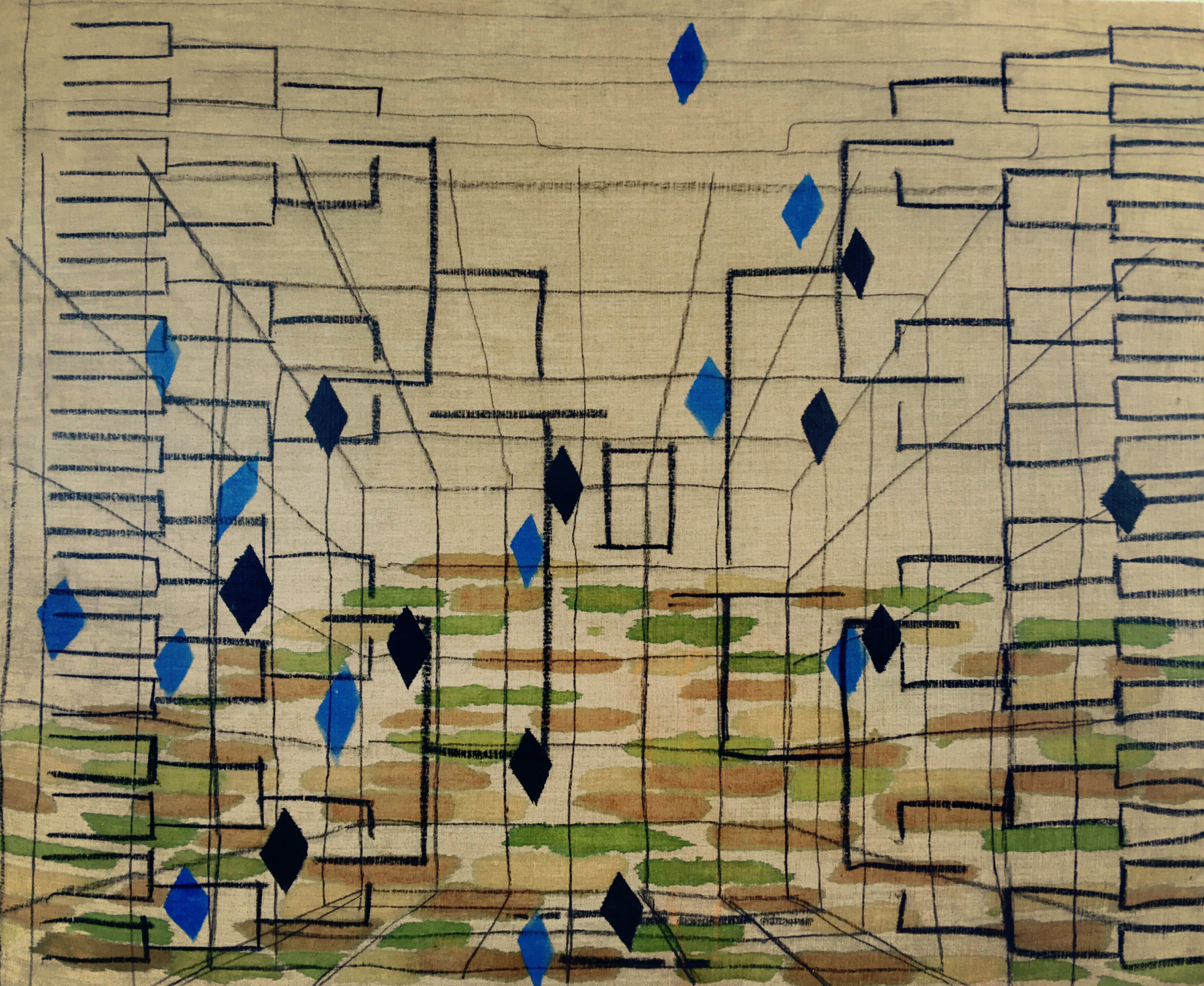What Art Criticism Can Learn From Sports Writing
Ridley Howard, Winter Field, 2014, oil on linen, 72 x 66 inches
[courtesy of the artist and Andréhn-Schiptjenko Gallery, Stockholm]
Share:
Cricket television commentator Richie Benaud (1930-2015) had a critical mantra: “If you can add to what’s on the screen, then do it; otherwise shut up.” Benaud’s ability to self-edit came from his respect for and fondness of others: “What I want most from being a television commentator,” he said, “is to be able to feel that when I say something, I am talking to friends.” Art writing, unlike sports writing, operates at a remove; few critics write with enough warmth to elicit friendship. There’s nothing wrong with that, in principle, if the goal is to be clear and succinct, to get to the point. Some critics reject meretricious babbling and have a reason for saying what they’re saying. Some even tell good stories. Too many, unfortunately, are testing your literacy.
It may seem quaint, but stories are useful—even cognitively essential—means for conveying and retaining information. Yet the “who, what, when, where, why” of traditional journalism and storytelling is missing in most art criticism. It’s not because art writing is a fundamentally sophisticated form. Despite its jargon and citations to philosophy, it’s usually less sophisticated than other forms of commentary or criticism, with its authors often unable to account for the wider frame of meaning—the “why?”—that makes what they are writing about significant. In other words, readers, if you finish a piece of art criticism and immediately forget what you just read, it is because of this: the piece lacked both worthwhile context and a coherent narrative.
Ridley Howard, Evening Game, 2013, oil on linen, 30 x 36 inches
[courtesy of the artist and Andréhn-Schiptjenko Gallery, Stockholm]
Ridley Howard, Blue Nets, 2013, oil on linen, 30 x 36 inches
[courtesy of the artist and Andréhn-Schiptjenko Gallery, Stockholm]
In a recent New York Times piece covering Andy Murray’s Wimbledon victory over Milos Raonic, sports journalist Christopher Clarey set a scene with a complete story in view: “Andy Murray’s second Wimbledon victory—6-4, 7-6 (3), 7-6 (2) over Milos Raonic on Sunday—evinced great emotion just the same as Murray sat in his chair on Centre Court sobbing into his towel with the customary pomp and circumstance of the awards ceremony getting underway all around him.” The history and the drama, the context and the emotion, are all there in one sentence. Conflict, struggle, climax, and resolution—elements of a strong narrative—are built into sports naturally, but it takes real work to get them out of the game and into the writing. (It’s worth noting that Clarey’s well-written 1,300-word review appeared, edited, within hours of the game’s end; art criticism, by contrast, is crafted over days, weeks, or even months.)
When arriving at “resolution,” art criticism prefers its opposite—”ambiguity”—as a final goal. Lots of things in life—such as the ingredients lists on the processed foods I eat—leave readers with open-ended questions. The last three art exhibition reviews I read before writing this essay employed a “what does it all mean” ending: “His painting challenges us to face a future filled with contradiction …” (Aaron Bogart, frieze); “Such [execution] lends the artist’s unsolvable riddles rare appeal,” (Johanna Fateman, Artforum.com); “[The artist] has created a show that surges with energy, but also has cryptic ambiguity …” (Martha Schwendener, The New York Times). Are these fine critics—experts in the field of art—truly as mystified by paintings as I am by the chemical prose on my package of Ball Park hot dogs?
Ambiguity and open-endedness are indeed features of much great art—something to look for—but cannot be fully sufficient, the be-all and end-all impact of every contemporary artwork. To conclude a review with a summary of an exhibition’s ambiguity, as is the current trend, is a critic’s swing-and-miss. As Barry Schwabsky (art critic for The Nationand co-editor of international reviews at Artforum) wrote in the Brooklyn Rail four years ago, “if you are not risking meaning—that is, both putting accepted meanings at risk and taking the risk of producing new, controvertible meanings—then in my view you are not practicing criticism.”
When The New York Times‘ sports writer Harvey Araton asked whether Stephen Curry, who has twice set the NBA record of most three-point shots made in a season, is dominating the traditional game or actually changing its nature, he was putting forward a controvertible interpretation of Curry’s playing, and backing it with evidence and argument. This player is shorter in stature than most basketball players and relies on outside three-point shots to score, whereas the custom is to play the ball inside, under the net, going for more two-point shots. Is Curry the only person able to consistently make those difficult shots, or is he simply the first to play and think in those terms? What, in other words, does Stephen Curry mean for basketball? For its future? This question, posed by Araton, is far from a perfunctory setup for a “dunno” ending, the standard of art criticism. Rather, it is the result of the close attention paid by an expert whose observations have moved him to ask what Curry is contributing to the meaningful story of the game as a whole and to how it is understood.
Wendy White, Brandi Chastain (Sports Bra Moment), 2014, inkjet and acrylic on UV vinyl, wood and mylar frame, custom rug, 97 x 73 inches [courtesy of the artist]
To conclude a review with a summary of an exhibition’s ambiguity, as is the current trend, is a critic’s swing-and-miss.
Sports is generally viewed as a meritocracy. (Of course, it isn’t: there are problems with doping; unequal access to facilities, training, and equipment; etc.) Yet assuming that it’s a relatively merit-based field, appreciating the character of athletic play often turns to into an appreciation of form, and a conversation about aesthetics. “Beauty is not the goal of competitive sports,” wrote David Foster Wallace in his essay Roger Federer as Religious Experience, “but high-level sports are a prime venue for the expression of human beauty.” Writers routinely refer to athletes’ kinetic “form,” to the character of their athletic “style,” or to the originality of their moves. While conducting an interview for The New York Times, writer Scott Cacciola once asked professional ballet dancer Taras Domitro for his thoughts on Stephen Curry’s particular “artistry”: “The way he dribbles a ball,” said Domitro, “is the way we handle a woman on stage.”
Each point scored in a game has the same value as the next, but not every successful shot makes the highlight reel, gets exalted as “beautiful” or “gorgeous” by commentators, or goes down in history. Most points only serve to move the game forward; conversely, the moves or plays that receive adulation are not always the winning ones. The sports writer must select from these conceivably infinite moments throughout a game, and weave through them a story set in a larger framework of the complete event, incorporating details of exotic statistics and historical knowledge—all while entertaining an incredibly wide readership, with writing skilled enough to engage readers of diverse levels of expertise.
Painter and writer Jonathan Richardson (ca. 1667-1745) once attempted to grade art “objectively” by charting and awarding scores on a scale of zero to 18, in several categories. (He used this system to give Anthony Van Dyck’s now-lost painting “Countess Dowager of Exeter” an impressive 16/18 for “Pleasure.”) Medals for artistic achievement were awarded during the early years of the Olympic Games: the first gold in sculpture went to Walter Winans’ An American Trotter, a bronze horse that made its debut at the 1912 games in Stockholm, where the artist also won the silver in sharpshooting. Although the visual arts have yet to incorporate a rigorous “point” system—artists of the modern era made sure to abolish any vestiges of that impulse—we still give out prizes. In 2001 Martin Creed nabbed the United Kingdom’s prestigious Turner Prize for a work that made the otherwise “empty” exhibition space’s lights go on and off. More recently Nicole Eisenman won a 2015 MacArthur Fellowship for her contribution to the discipline of painting: her works devour the history of the medium in order to extend its possible configurations and potential, works so good they will probably be copied, badly, for the next 10 years.
Clayton Colvin, The Ledger, 2014, acrylic, charcoal, pigment, and india ink on linen over panel, 46 x 56 inches [courtesy of the artist]
Perhaps the fact that there is no ultimate evaluative standard for art determining the validity of assertions made about artworks permits art critics to drive so many words over the guardrails. Here is where sports writing, viewed as a kind of creative nonfiction, might be a helpful and translatable example of structure. John McPhee’s classic book Levels of the Game (1969) recounts a single tennis match between Arthur Ashe and Clark Graebner at the 1968 US Open Championship at Forest Hills. Using what he calls an “organizing principle”—a key theme that binds his research, commentary, quotes, and ideas—McPhee structures the writing into blocks of scenes interspersed with blocks of storytelling information. Opponents Ashe and Graebner were opposites in their backgrounds, politics, and playing styles, but they had known each other for more than a decade; this relationship provided McPhee with a unique “organizing principle,” connecting scenes that switch between present tense (for crisp descriptions of athletic play) and past tense (for biographical story lines) that shape the story’s context and meaning. “A person’s tennis game begins with his nature and background,” wrote McPhee, “and comes out through his motor mechanisms into shot patterns and characteristics of play.”
When sports writer Brian Phillips was recommended to me as “the best writer I know” by an English professor friend of mine, I did not remember that I’d met him at a wedding years earlier. It’s because he spoke of himself as a poetry critic then. Phillips had, around that time, published an essay titled “Poetry and the Problem of Taste” in Poetrymagazine. After learning that I was a painter, he talked to me about art criticism, and he mentioned that his friend wrote for an art journal—one we all know, but that no one reads.
I grimaced.
“What?” he pressed. “Just tell me.”
I confessed: “I think it’s indecipherable garbage.”
Exhilarated, he replied, “That’s exactly what it is!”
Rob Colvin is a painter and writer in New York, NY.



